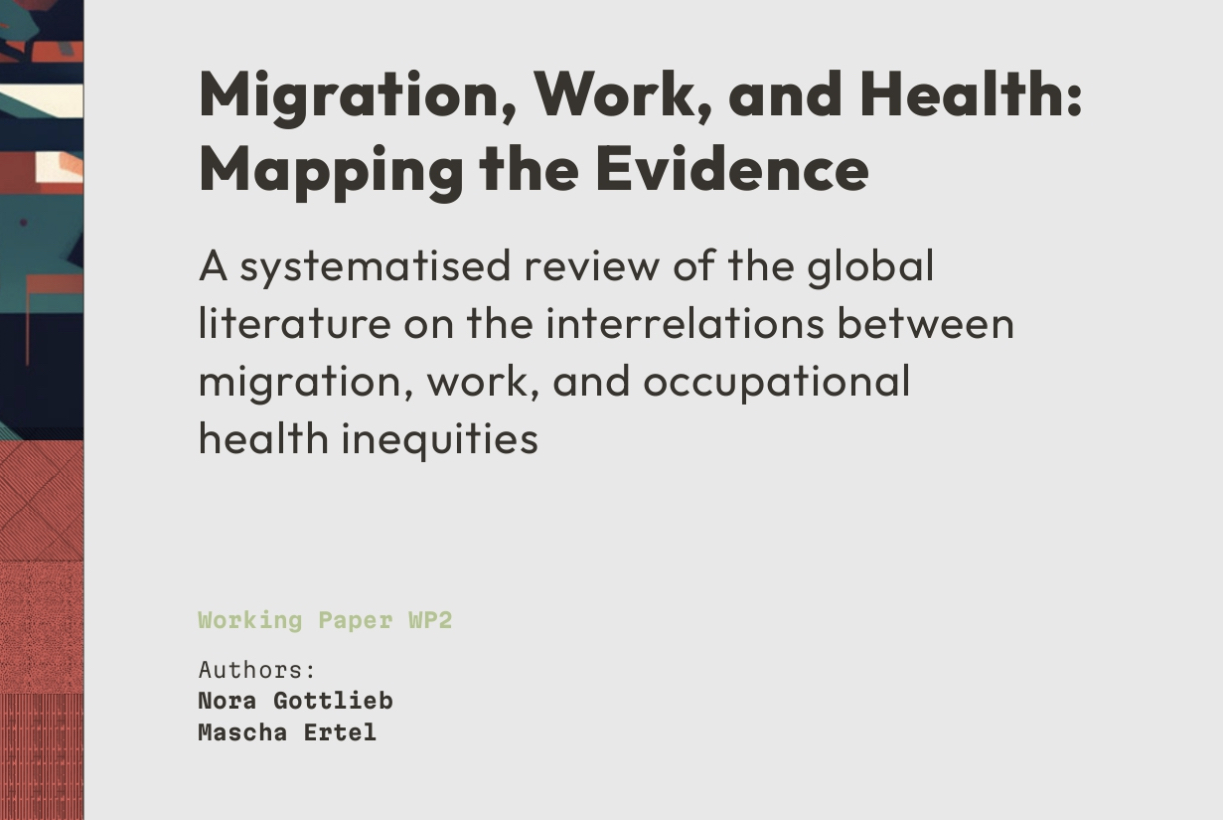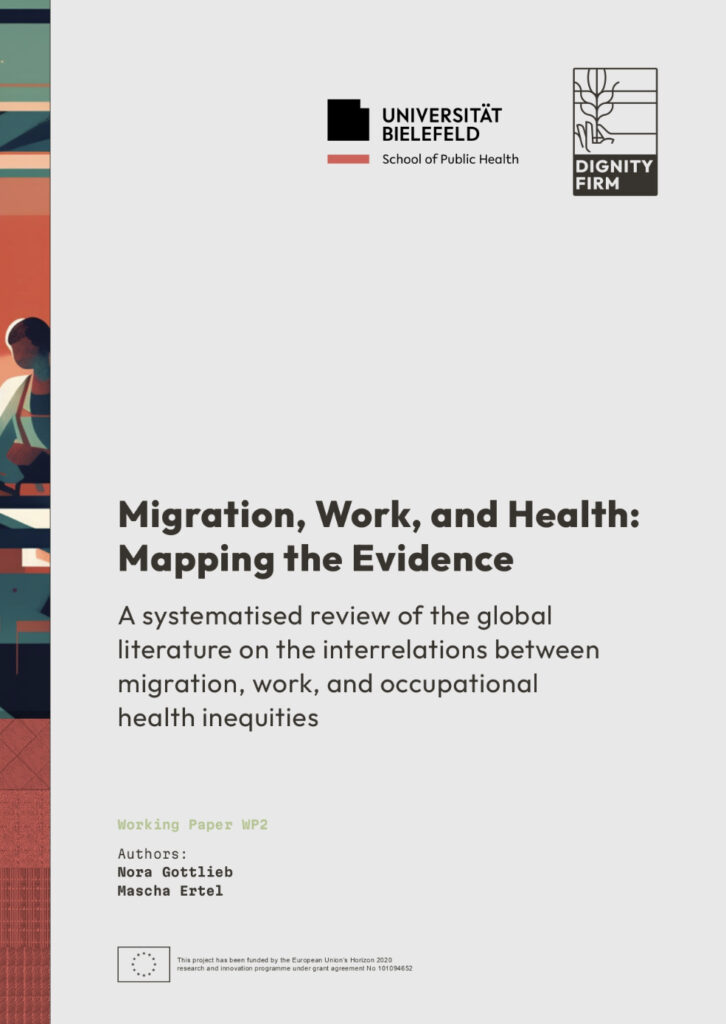
16 Jul Essential, yet precarious work as a key health risk for migrants

Essential, yet precarious work as a key health risk for migrants
by Nora Dalia Gottlieb, Universität Bielefeld – School of Public Health
It seems common sense that migrants tend to work in more taxing and dangerous jobs and that this, in turn, impacts their health. It is also widely known that the COVID-19 pandemic has amplified pre-existing social and health inequities worldwide. But what do we know – in terms of systematic, generalizable scientific evidence – on the interrelations among migration, work, and health? And what is known about the mechanisms that led to social and health inequities for migrants during the pandemic?
Two new publications can help answer these questions. First, the WP2 Public Health team of DignityFIRM has written a working paper “Migration, Work, and Health: Mapping the Evidence”, which summarizes the current scientific literature on the occupational health of migrant workers (i.e., of workers with migration status) generally, as well as with specific regard to migrants working in farm-to-fork industries. Based on 15 review papers and 34 empirical studies, the working paper shows that migrant workers worldwide are at high risk of work-related physical and mental illnesses and injuries. Core causes of their high occupational risk include migration-related, employment-related, and socio-economic precarity. Unfortunately, the working paper also highlights a lack of (studies on) interventions to address these structural causes of migrant workers’ occupational health inequities, alongside further blind spots. For example, remarkably little research on the above questions has been undertaken in the European region, and certain industries (e.g., food processing, hospitality, delivery) are so far under-researched. Also, hardly any research follows migrants and their experience of their work over time, along their migration trajectories or life courses.
Second, to measure and understand migrants’ COVID-19-related health inequities, our team at the Bielefeld School of Public Health, together with the IOM and researchers from Heidelberg University Hospital and the Swedish universities of Uppsala and Umeå, systematically evaluated the global empirical literature – 370 studies in total – on COVID-19 among migrants, refugees, and internally displaced persons. The results of this review are now published in The Lancet eClinicalMedicine.
The review comprises a quantitative and a qualitative part. The quantitative part is a meta-analysis of data from over 53 million participants from empirical studies on Covid-19 infection risk, hospitalisations, ICU admissions, mortality, and vaccination rates. It found that that migrants, refugees, and internally displaced persons were exposed to significantly higher health risks during the Covid-19 pandemic than other population groups. For example, they were at a 84% higher risk of infection compared to non-migrant populations; and the population-based mortality risk was 46% higher compared to autochthonous populations.
The qualitative part of the review highlights intersecting migration- and work-related factors as core causes of COVID-19-related health inequities. For example, the fact that migrants tend to work under precarious conditions in essential jobs also implies that they often lack access to social security and governmental support. During the pandemic, this meant that many migrant workers were unable to take sick leave, to test and quarantine, or to demand adequate health protection at work. Such conditions, in turn, are arguably associated with higher risks of infection and of spreading the virus.
Our analysis also shows that pandemic measures impacted migrants in severe and unique ways. Lockdown measures had severe economic consequences (such as loss of job and income) for precariously employed migrants, which sometimes entailed hazardous alternative livelihood strategies such as survival prostitution or child labour. Lockdowns furthermore impacted migration prospects and trajectories; for instance, when services such as visa and work permit renewal or asylum procedures were disrupted. Combined, these factors generated massive legal, social and economic insecurity for migrants. The transnational character of their lives added to migrants’ distress as they feared for the wellbeing of their beloved ones back home while experiencing crisis in their host country (“living the pandemic twice”). Further stressors for migrants during the pandemic include increased discrimination and aggravated barriers to health and social services. Ultimately, these unintended consequences of pandemic measures may have contributed more than the pandemic itself to the severe psychosocial impact on migrants. Notably, our analysis highlights examples where greater inclusion of migrants in pandemic measures and social support mechanisms during later phases of the pandemic (e.g., access to social security and governmental assistance) has led to better social and health outcomes.
Ultimately, both publications underline the moral and public health imperative for health and social policies to include migrants, refugees, and internally displaced persons and consider their needs and contexts. And both publications highlight the need for more research and action on the intersection of all three dimensions: migration, work, and health. That is, inter- and transdisciplinary research that helps understand the structures and dynamics that underlie social and health (in)equity for migrants; and multilevel intersectoral engagement of political, economic, and civil society actors (including migrants themselves) to improve the protection of migrant workers’ rights and health. In this sense, DignityFIRM seems right on track.